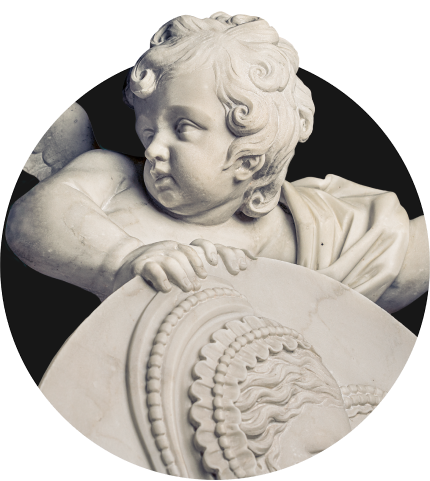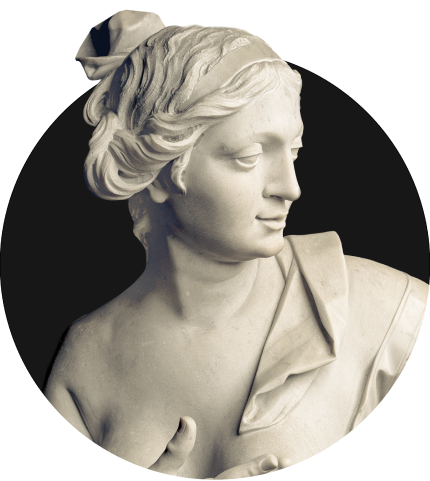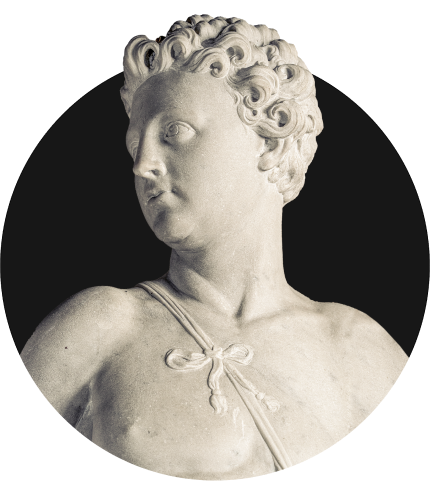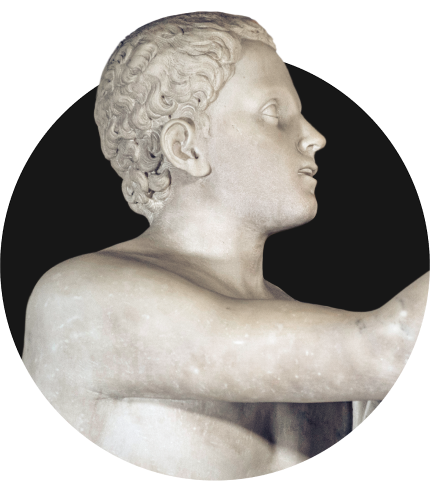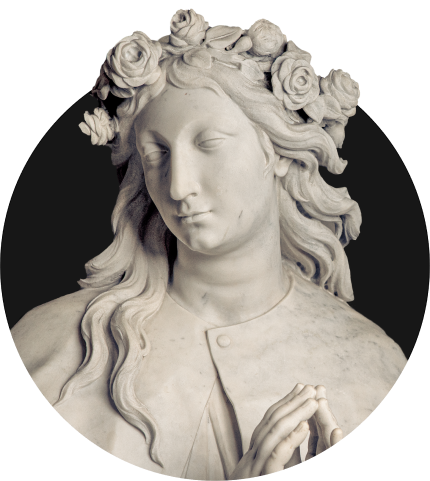
The statues
The Sweetness of the Marital Yoke
The statues
The Sweetness of the Marital Yoke
Raimondo di Sangro dedicated his Sweetness of the Marital Yoke to the wife of his eldest son Vincenzo, Gaetana Mirelli of the Princes of Teora, when she was in the flower of youth. It is for this reason that the woman’s profile is little more than a sketch in the medallion, as was customary in the case of monuments to those still living. Paolo Persico was paid one-hundred-and-sixty ducats for this work.

The group of statues
The marble group portrays a fulsome-bellied woman holding a feathered yoke representing sweet obedience, and in her right hand she holds up two flaming hearts (deep mutual love). At her feet a winged putto plays with a pelican, emblem of charity. In mediaeval iconography, in fact, the pelican which pierces its own breast to nurse its young represents the sacrifice of Christ on the cross
The subjects of this allegory by Persico, a sculptor from Sorrento, are particularly fleshly and show an exaggerated decorativism. We see motifs familiar from two more statues in the Sansevero mausoleum, including the transparent clothing, but with less startling aims and results. As in three other statues in the Chapel, the column is the support for one face of a pyramid.
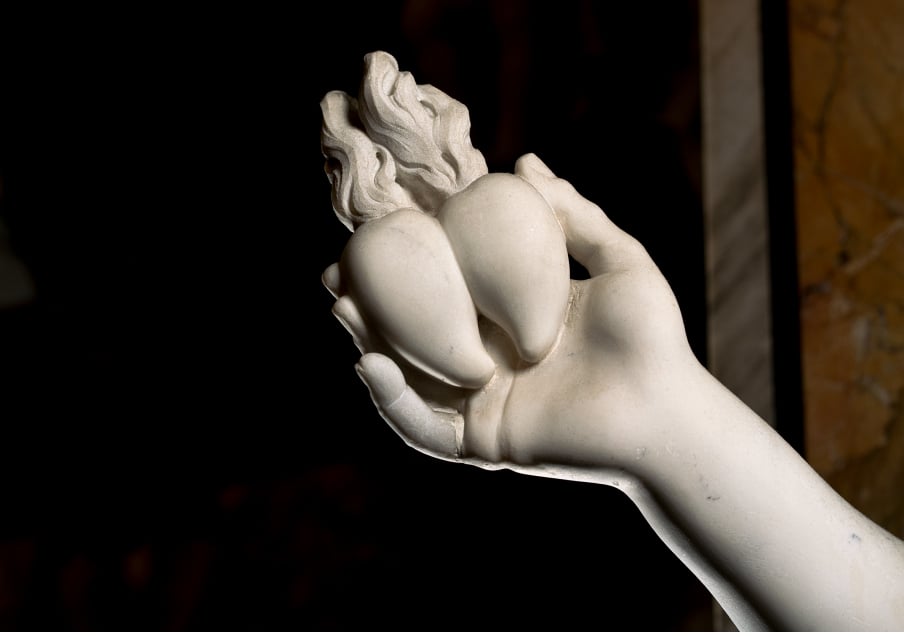
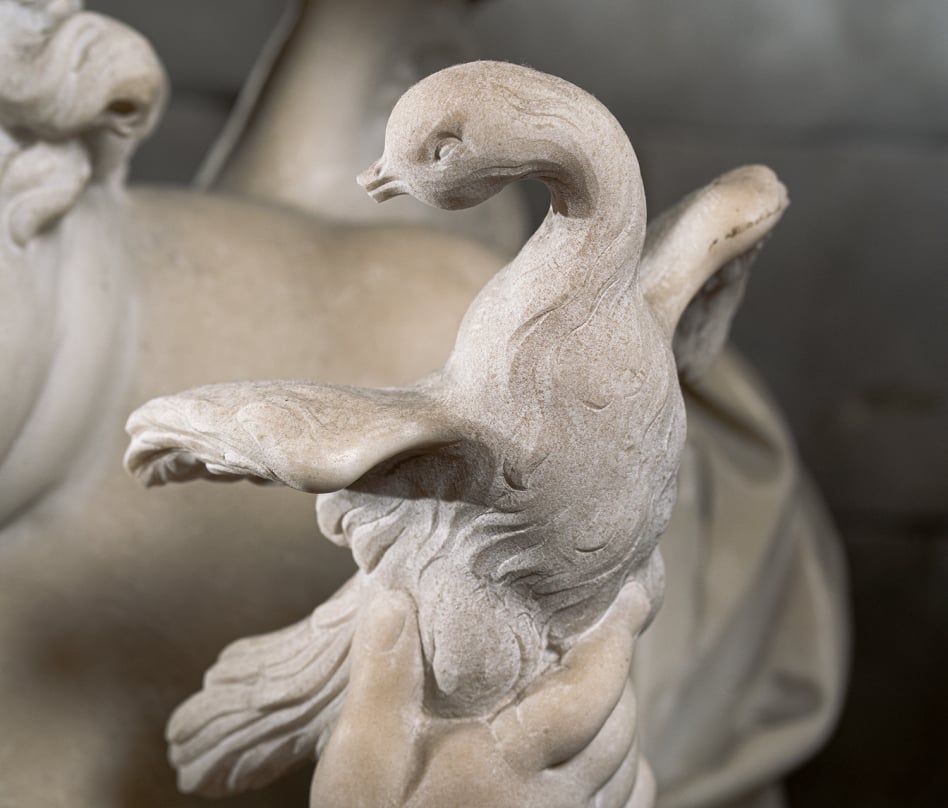
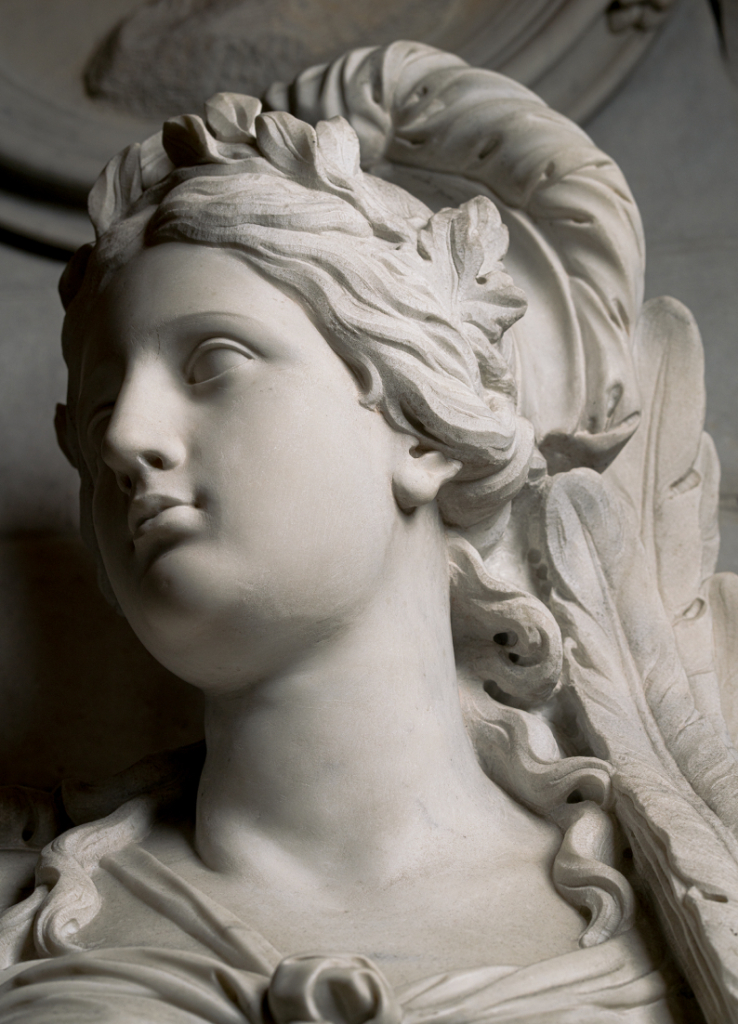
The meaning of the work
In this monument too, a number of interpretations have included allusions to procedures regarding alchemy. Reflecting a moment on one iconographical feature, the pelican, it may be said that this bird not only symbolises a particular type of retort (a container for distillation), but represents an image of the philosopher’s stone dispersed in lead in the fluid state. Lastly, according to the Hermetic tradition, the blood of the pelican is the so-called natural quintessence.
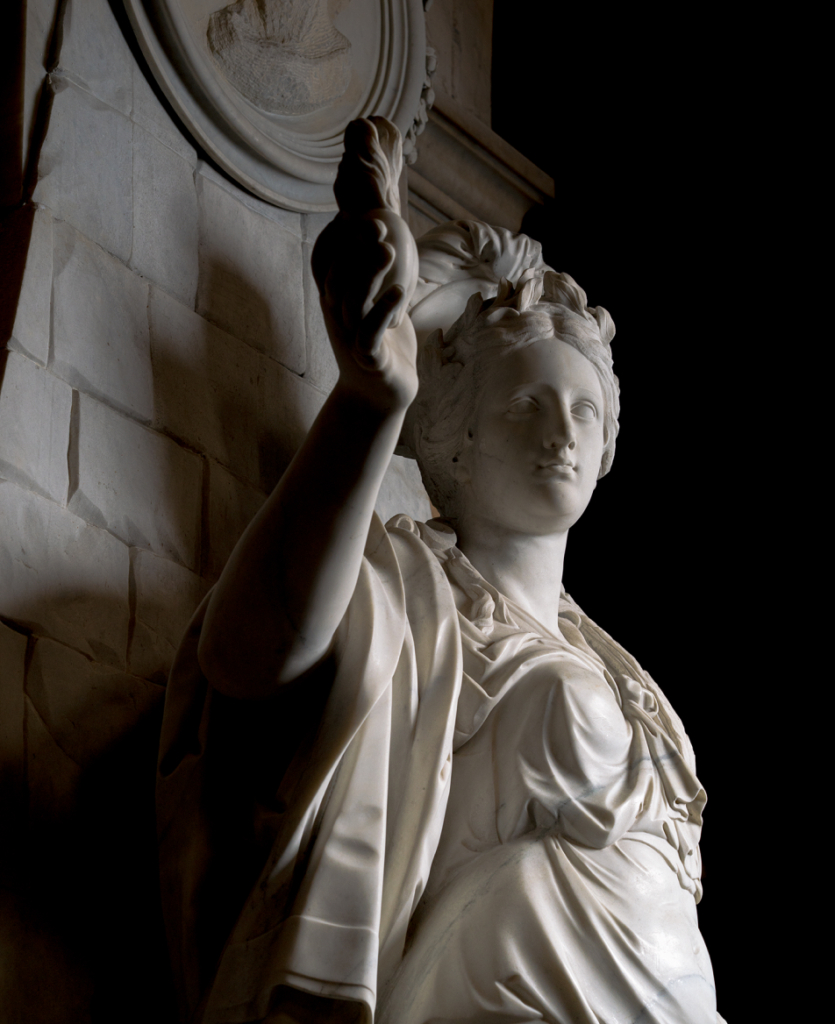
Gallery
Map
- High Altar
- Monument to Alessandro di Sangro
- Modesty
- Statue of Saint Rosalia
- Sweetness of the Marital Yoke
- Portrait of Vincenzo di Sangro
- Religious Zeal
- Monumento to Giovan Francesco
di Sangro, first prince - Liberality
- Monument to Paolo di Sangro,
forth prince - Decorum
- Monument to Giovan Francesco
di Sangro, third prince - Monument to Cecco di Sangro
- Monument to Giovan Francesco
di Sangro, fifth prince - Veiled Christ
- Glory of Paradise
- Disillusion
- Statue of Saint Oderisio
- Sincerity
- Portrait of Raimondo di Sangro
- Floor labyrinth
- Self-control
- Monument to Paolo di Sangro,
sixth prince - Education
- Anatomical machines
- Madonna and Child
- Portrait of Raimondo di Sangro
- Monument to Paolo di Sangro
second prince - Divine Love











